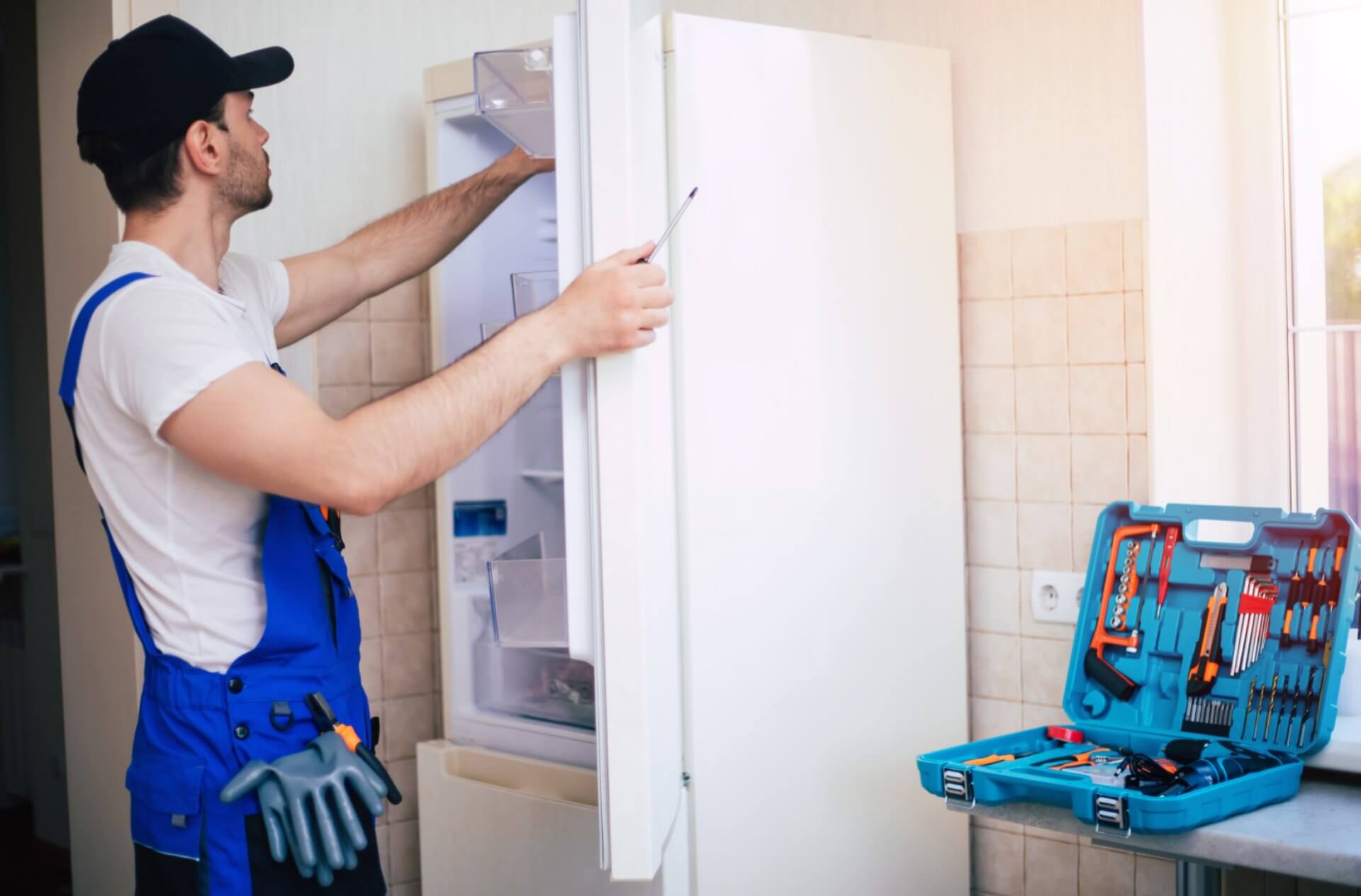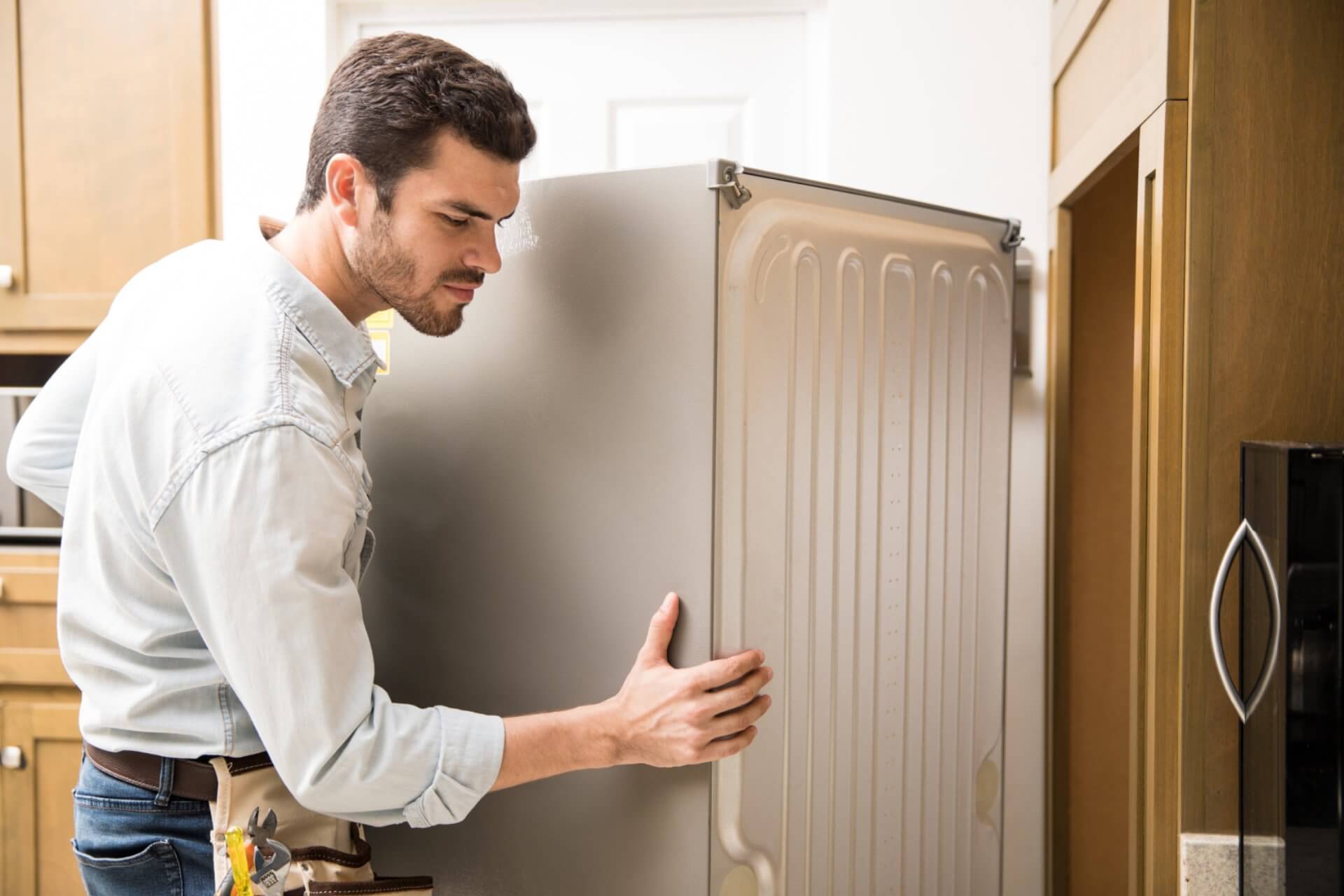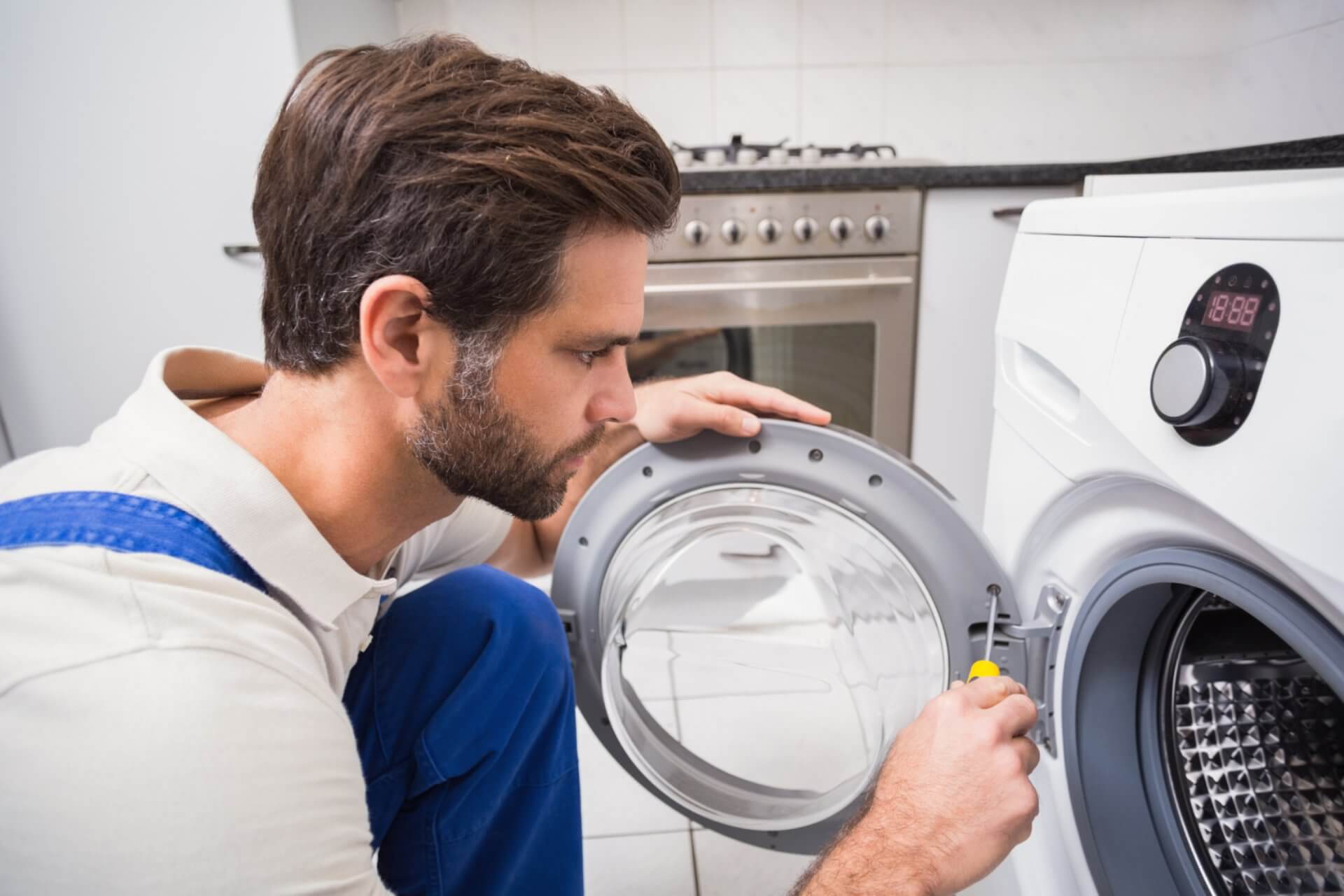When to Repair vs. Replace Your Home Appliances: A Cost Guide
That sinking feeling when your refrigerator stops cooling, or your washing machine starts making that horrible grinding noise – we've all been there. Your immediate thought might be "How much is a new one going to cost me?" But the real question you should be asking is: "Should I repair this appliance or replace it entirely?"
As someone who's repaired hundreds of appliances over the years, I can tell you that making the smart choice between repair and replacement can save you thousands of dollars over time. About 35% of Australians replace appliances that could have been economically repaired, while others waste money fixing machines that should have been sent to recycling.
This guide will help you make that crucial decision with confidence, based on appliance type, age, repair costs, and other practical factors that affect your bottom line.
![Person looking perplexed at broken appliance with repair quote in hand]
The 50% Rule: A Starting Point for Your Decision
Before diving into specific appliances, let's talk about the 50% Rule – a useful rule of thumb that many repair professionals use:
If a repair will cost more than 50% of the price of a new appliance AND the appliance is more than halfway through its expected lifespan, replacement is usually the more economical choice.
For example, if your 8-year-old washing machine needs a $400 repair and a new comparable model costs $700, replacement makes more sense since:
- The repair cost exceeds 50% of replacement cost (400 ÷ 700 = 57%)
- The machine is more than halfway through its typical 10-12 year lifespan
While this rule provides a good starting point, each appliance has unique considerations that might adjust your decision.
Average Lifespans of Major Home Appliances
Understanding the typical lifespan of your appliances helps you determine where yours stands in its life cycle. Here's what you can typically expect from major appliances with proper maintenance:
| Appliance | Average Lifespan | Early Replacement Point | Extended Life With Maintenance | |-----------|------------------|-------------------------|-------------------------------| | Refrigerator | 10-15 years | 8 years | Up to 20 years | | Washing Machine | 10-12 years | 7 years | Up to 15 years | | Clothes Dryer | 10-13 years | 7 years | Up to 15 years | | Dishwasher | 8-10 years | 6 years | Up to 12 years | | Oven/Range | 13-15 years | 10 years | Up to 20 years | | Microwave | 7-10 years | 5 years | Up to 12 years | | Air Conditioner | 10-15 years | 8 years | Up to 20 years |
Maintenance Matters: Regular cleaning and maintenance can extend an appliance's lifespan by 30-50%! Before making any repair or replace decision, consider whether poor maintenance has prematurely aged your appliance.
![Timeline showing average lifespans of common household appliances]
Repair vs. Replace: Breakdown by Appliance Type
Refrigerators
Average New Cost: $1,000-3,000 for standard models Common Repair Costs:
- Thermostat/temperature control: $100-300
- Compressor replacement: $500-1,000
- Circuit board: $400-700
- Sealed system leaks: $400-800
- Door seal replacement: $100-300
When to Repair:
- Less than 8 years old
- Problems with door seals, ice makers, fans, or thermostats
- Electronic issues that don't involve the compressor
- Cosmetic issues
When to Replace:
- Over 10 years old with compressor issues
- Multiple problems occurring simultaneously
- Energy efficiency upgrades would save significant costs (older fridges can use 2-3 times more electricity than modern energy-efficient models)
- Interior cabinet damaged or rusting
Energy Consideration: According to Australian Government energy ratings, replacing a 15-year-old refrigerator with a modern efficient model can save $100-200 per year in electricity costs. For older fridges, this energy difference can offset the cost of a new appliance within 5-7 years even if the old one still works!
Washing Machines
Average New Cost: $700-1,800 Common Repair Costs:
- Motor replacement: $250-450
- Drum bearing replacement: $200-350
- Water pump: $150-250
- Circuit board: $300-600
- Door seal/gasket: $100-250
When to Repair:
- Less than 7 years old
- Simple mechanical issues like door catches, belts, or seals
- Single component failures with no other signs of wear
- Mid-range or higher-end models worth preserving
When to Replace:
- Over 8 years old with motor or bearing problems
- Significant rust on the drum or cabinet
- Multiple leaks from different locations
- Excessive movement or noise that can't be fixed by leveling
- Mould issues that persist despite cleaning
Water Efficiency: Australian water efficiency standards have improved substantially. Newer machines can use 50% less water than models from 10 years ago – an important consideration if your water bills are high.
Clothes Dryers
Average New Cost: $500-1,500 Common Repair Costs:
- Heating element: $100-250
- Motor replacement: $200-400
- Drum rollers/bearings: $100-250
- Thermostat/thermal fuse: $75-150
- Control board: $200-400
When to Repair:
- Less than 7 years old
- Specific mechanical problems like belts, rollers, or heating elements
- Simple electrical components like thermal fuses or thermostats
- Higher-end models with simple issues
When to Replace:
- Over 8 years old with major motor problems
- Fire damage or electrical burning
- Drum damage that affects clothing
- Multiple component failures
- When energy efficiency gains would be substantial
Safety Note: According to Fire and Rescue NSW, dryers are involved in approximately 12% of household fires in Australia. If your dryer shows any signs of burning or unusual electrical odours, replacement is the safest option regardless of age.
Dishwashers
Average New Cost: $600-1,500 Common Repair Costs:
- Pump motor: $150-350
- Control board: $200-450
- Door latch/spring: $100-200
- Spray arm: $75-150
- Water inlet valve: $150-250
When to Repair:
- Less than 6 years old
- Problems with spray arms, filters, or door components
- Water supply or drainage issues that don't involve the main pump
- Mid to high-end models with simple issues
When to Replace:
- Over 7 years old with motor or control board failures
- Interior tub rust or cracks that cause leaking
- Multiple simultaneous problems
- When improved water and energy efficiency would create significant savings
Water Saving: Modern dishwashers use about 13-15 litres per cycle compared to older models that might use 25+ litres. For a family running 5 cycles weekly, this can save over 3,000 litres of water annually.
Ovens and Ranges
Average New Cost: $800-2,500 Common Repair Costs:
- Heating element: $150-300
- Thermostat: $150-300
- Electronic control panel: $250-600
- Gas igniter: $150-250
- Door hinges/springs: $100-250
When to Repair:
- Less than 10 years old
- Single element or burner issues
- Thermostat or temperature problems
- Door seal issues
- Ignition problems on gas models
When to Replace:
- Over 15 years old with major control issues
- Multiple heating elements failing
- Significant rust in the oven cavity
- Gas models with valve problems
- When energy efficiency would create substantial savings
Pro Tip: Ovens and ranges are among the longest-lasting appliances in your home. Simple components like elements and igniters can be replaced multiple times over the life of a quality range, making these appliances particularly repair-friendly.
Additional Factors That Should Influence Your Decision
1. Energy Efficiency Gains
Modern appliances are significantly more efficient than models from even 10 years ago. Consider these typical savings:
- Refrigerators: 40-60% more efficient than 15-year-old models
- Washing Machines: 25-35% more energy efficient and 50% more water efficient
- Dryers: Heat pump models use up to 60% less energy than conventional dryers
- Dishwashers: 30% more energy efficient and 40% more water efficient
If your appliance is over 10 years old, calculate the potential energy savings of a new model with high energy star ratings. For frequently used appliances like refrigerators, the energy savings alone can justify replacement even if repair is possible.
2. Parts Availability
As appliances age, parts become harder to find. This is especially true for:
- Models over 10 years old
- Discontinued lines
- Brands that have left the Australian market
Before paying for a diagnosis, ask the repair company to check parts availability and delivery timeframes. I've seen too many customers pay for diagnostics only to learn that the needed part is no longer available or would take weeks to arrive.
3. Remaining Useful Life After Repair
Consider how long the appliance will likely last after the repair. Sometimes fixing one component reveals that other parts are nearing the end of their life. Ask your repair technician for an honest assessment of the appliance's overall condition.
4. Warranty Coverage on New vs. Repaired
New appliances typically come with 1-5 year warranties, while repairs usually carry 30-90 day guarantees. For expensive repairs on older machines, this difference in warranty coverage should factor into your decision.
According to the Australian Consumer Law, appliances should last a reasonable amount of time, which can extend beyond the stated warranty period for major appliances. This provides additional protection for new purchases that repairs don't offer.
![Person comparing warranty documents for repair vs new purchase]
Common Repair Red Flags: When to Walk Away
Certain issues almost always signal that replacement is the better option:
- Multiple previous repairs — If you've already repaired the appliance within the past year
- Water damage to electronic components — This often leads to cascading failures
- Significant rust or cabinet damage — Structural problems can't be economically fixed
- Burning smells or visible burn marks — Safety issues that suggest deeper electrical problems
- Outdated efficiency standards — Appliances from before major efficiency regulations changed
- Repairs exceeding 75% of replacement cost — Almost never economically justifiable
Safety Warning: According to Australia's Electrical Safety Standards (AS/NZS 3760), appliances with damage to electrical insulation, exposed wiring, or signs of burning should be immediately replaced regardless of age or repair cost. Safety should always override economic considerations.
The Hidden Costs of Delaying Replacement
Sometimes trying to squeeze extra life out of an appliance with repeated repairs can actually cost more in the long run. Consider these hidden costs:
- Energy inefficiency — Older appliances consume more electricity and water
- Water damage risk — Ageing washers, dishwashers, and refrigerators are more likely to leak
- Food spoilage — A refrigerator that's unreliable can lead to hundreds in spoiled food
- Laundromat costs — Temporary solutions while waiting for repairs add up quickly
- Multiple service calls — Attempting cheaper fixes first often leads to multiple diagnostic fees
DIY Repair Considerations
Before making any decision, consider whether a DIY repair might be viable:
Good DIY Repair Candidates:
- Replacing refrigerator door seals
- Clearing dishwasher filters and spray arms
- Replacing dryer belts or thermal fuses
- Fixing washing machine drain pump filters
- Replacing oven heating elements
Leave to Professionals:
- Any repair involving sealed refrigeration systems
- Major electrical component replacements
- Gas appliance repairs (which must meet AS/NZS 5601 standards)
- Washing machine motor or bearing replacements
For simple repairs, DIY can save 50-80% of service costs, dramatically changing the repair-vs-replace equation. check my other guides for specific DIY repair instructions!
![Person successfully completing simple DIY appliance repair]
Making the Final Decision: A Simple Checklist
Ask yourself these questions to make your final decision:
-
Age Cheque: Is the appliance in the first half of its expected life?
- Yes: Lean towards repair
- No: Lean towards replacement
-
Cost Comparison: Is the repair less than 50% of replacement cost?
- Yes: Lean towards repair
- No: Lean towards replacement
-
Frequency Cheque: Is this the first repair needed?
- Yes: Lean towards repair
- No: Lean towards replacement
-
Efficiency Analysis: Will a new model save significant energy/water?
- Yes: Lean towards replacement
- No: Lean towards repair
-
Reliability Prediction: Does the technician think other problems are likely soon?
- Yes: Lean towards replacement
- No: Lean towards repair
If most answers lean towards repair, fixing the appliance is likely your best bet. If most point to replacement, it's probably time to shop for a new model.
Conclusion
The repair-vs-replace decision isn't always straightforward, but with these guidelines, you can make choices that save money in both the short and long term. Remember that the cheapest option today isn't always the most economical over time.
In my years of experience, I've found that high-quality appliances generally deserve repair investment in the first half of their lifespan, while budget models often make more sense to replace once major components start failing.
Whatever you decide, keep that regular maintenance schedule going! Proper care means fewer repair-or-replace dilemmas and more years of reliable service from all your home appliances.
![Well-maintained appliance setup in modern kitchen]
Frequently Asked Questions (FAQs)
How much should I budget annually for appliance repairs? According to consumer data, Australians spend on average $150-250 per year on appliance repairs across all household appliances. Setting aside this amount helps ensure you're not making financial decisions under emergency pressure.
Are extended warranties worth purchasing for new appliances? Extended warranties typically make sense only for high-end appliances ($2,000+) with sophisticated electronics. For standard appliances, the cost of extended warranties often exceeds what you'd pay for likely repairs during the covered period.
What's the environmental impact of replacing vs. repairing? Manufacturing a new appliance generates 200-1,600 kg of CO₂ depending on the appliance type. When possible, repairing extends an appliance's useful life and reduces landfill waste. However, significant efficiency improvements in new models can sometimes offset this environmental cost through reduced lifetime energy usage.
Do certain brands last longer or represent better repair value? Yes. In my experience, mid-premium European and some Japanese brands generally offer the best repairability and longevity, though they have higher upfront costs. Budget brands typically have shorter lifespans and less economical repair profiles.
How quickly should I decide about repairing or replacing? While you shouldn't rush major financial decisions, delays can create additional costs (like laundromat fees or restaurant meals). Aim to decide within 1-2 days for essential appliances and within a week for less critical ones.
What should I do with appliances I decide to replace? Australia has various recycling programmes for old appliances. Many retailers offer removal of old appliances when delivering new ones. For working or repairable appliances, consider donation to community organizations that refurbish appliances for families in need.

About julian
Home appliance enthusiast and DIY repair specialist with a passion for helping others save money on appliance maintenance.
Related Articles

How to Extend the Life of Your Refrigerator: 7 Maintenance Tips

Fridge Not Cooling? 11 DIY Fixes for Common Problems | Australian Guide

